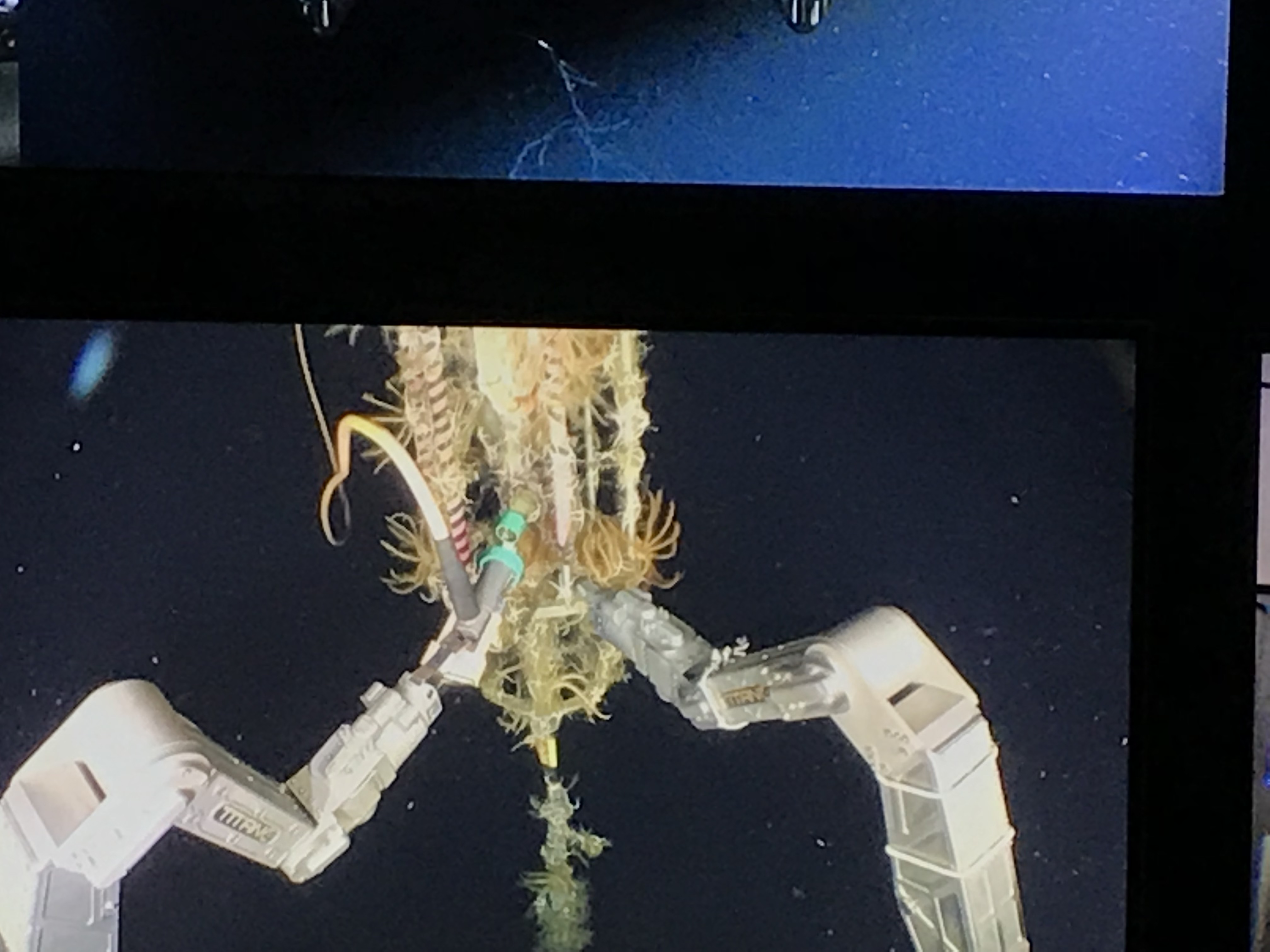The R/V Atlantis is on the move, following a day of successful Jason dives at Oregon Offshore (600 meters depth) and Slope Base (2900 m) sites. Two of the shallow profiler moorings have been “turned,” and we’re now transiting to the base of Axial Volcano to complete the third. “Turning” one of these massive moorings means that the 2018 packages containing the controller computer and the science pod (which moves up and down in the water column on a winched cable, taking measurements) have been returned to the ship and replaced by new 2019 instrument packages. The recovered equipment needs to be cleaned, because it is covered in ‘biofouling’ (animals and algae that grow on or cling to any hard surface in the ocean), and will be returned to the University of Washington for refurbishment.

This required a series of delicate dives by Jason, going in and out of the water with new and old equipment with very few breaks in between, and they went very well. The Jason pilots and the UW engineers have been doing this for several years now, so it was interesting to see their smooth communications in the control room as they ran through the checklist of operations, step by step. From cleaning brittle stars out of connector areas, to plugging in and unplugging underwater power and communications connectors, to moving locking levers and releasing lines while avoiding delicate instruments and cables, everything was calm, cool, and collected.
Now that the mooring work has been completed at Slope Base and at the Offshore Site, the Regional Cabled Array team onshore is busy powering up the equipment through the 900 km of undersea cables, turning the platforms on, as well as the instruments for complete testing of the newly installed infrastructure. Soon, the profilers will be conducting nine profiles/day from 200 m beneath the oceans’ surface to ~ 15 feet beneath it. In concert the three profiling moorings (including the one at Axial Base) have completed >35,000 profiles since they have been installed.
The VISIONS 19 students are now confident loggers in the control room (annotating video, taking screen grabs, and managing data storage), as well as helping to take water samples, cleaning off equipment, and documenting the work happening on deck.

They’re also making progress on their projects, recording videos, interviewing the scientists and engineers, and asking lots of questions. Some of them even finished their finals while aboard the ship (which I’m sure they were relieved to put behind them). We’ve also seen some whales, dolphins, and even a curious shark swimming around the vessel, so they’re getting to experience some marine biology as well.
Once the R/V Atlantis gets to the Axial Base site, we’ll start working on the mooring there. Following work at the base of the volcano (2600 m) the ship will transit to the summit of the volcano to deploy a few more instruments on the seafloor, including a new HD video camera. In the meantime, everyone is taking a breath after 24 hours of continuous work and preparing for the next burst of activity.
